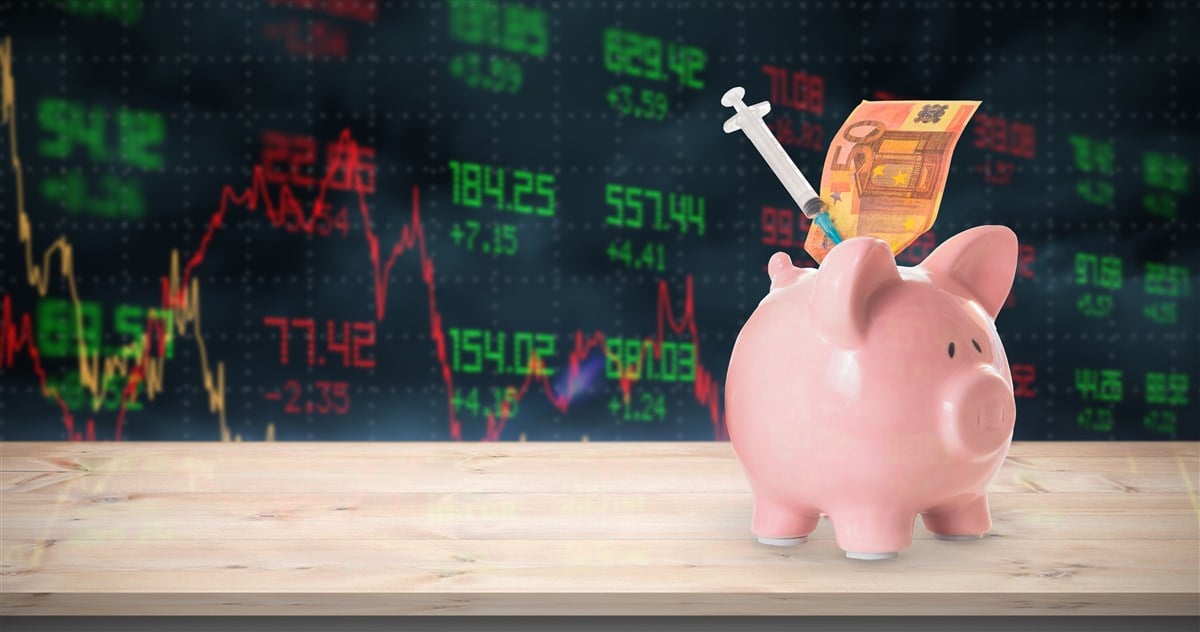
Key Points
- Health care stocks are seen as safe havens in economic downturns, as they provide stability due to consistent demand.
- Undervalued S&P healthcare dividend payers offer attractive entry points, as they're trading below their intrinsic value based on potential.
- Johnson & Johnson, Gilead and Bristol Myers are among the S&P's healthcare values.
- 5 stocks we like better than AbbVie
Johnson & Johnson NYSE: JNJ, Gilead Sciences Inc. NYSE: GILD and Bristol Myers Squibb Co. NYSE: BMY are among healthcare sector dividend-payers trading at low valuations relative to their earnings.
Amid forecasts of a possible economic slowdown and market pullback, healthcare stocks can serve as safe havens for a couple of reasons.
First, they have some defensive elements. Regardless of economic conditions, the demand for healthcare products and services typically remains robust, resulting in reliable cash flows. That adds to the sector's long-term stability and can potentially offset declines elsewhere.
For example, in 2022, the Health Care Select Sector SPDR Fund NYSEARCA: XLV was down only 2%. That was a far better performance than eight of the 12 S&P sectors.
Dividends as a cushion in market downturns
Dividends are the other reason investors often flee to healthcare stocks when broad market conditions deteriorate. Dividend payments act as a cushion during market downturns, enhancing the defensive characteristics of healthcare stocks.
The XLV ETF as a whole pays a dividend yield of 1.6%, with companies including Pfizer Inc. NYSE: PFE and AbbVie Inc. NYSE: ABBV among sector components with the highest dividend yields.
Undervalued healthcare names can offer investors an attractive entry point relative to industry peers. These stocks may be trading below their intrinsic value based on revenue and earnings potential.
Dividend-paying stocks within healthcare are particularly attractive for income-oriented investors. The sector's mature companies often distribute profits to shareholders through dividends, providing a steady income stream.
Johnson & Johnson
The Johnson & Johnson chart shows the stock trading at March 2021 levels after rallying both this year and last. However, there are signs indicating the stock may be undervalued.
In the most recent quarter, net income grew at its fastest rate in more than two years, as you can see using MarketBeat's Johnson & Johnson earnings data. Revenue has been growing at mid-single-digit rates after slowing in 2022.
The Johnson & Johnson dividend yield is 3.12%, and the company has a 61-year track record of boosting shareholder payouts, landing it a spot on the list of dividend kings.
Wall Street anticipates the company earning $10 per share this year, an increase of 8%. Next year, that's seen growing by another 9% to $10.86 per share. Those represent steady growth rates for a long-established mature S&P 500 component.
Gilead Sciences
Gilead's dividend yield of 3.98% is more than double the S&P healthcare sector's yield.
The company has raised its dividend payments for the past eight years, with a current annual payout of $3. Its dividend payout ratio of 64.38% indicates there may be room to boost the dividend even further. The dividend payout ratio is the percentage of a company's earnings paid as dividends. It's an indication of dividend sustainability and the company's overall financial stability.
The Gilead chart shows a stock that's been consolidating throughout 2023. The stock has shown wide weekly price spreads, shows no discernable pattern and continues to trade well below late 2022 highs.
Analysts expect earnings to decline by 8% this year but are forecasting a rebound next year, with earnings coming in at $7.06 per share. That would be an increase of 6%.
Bristol Myers Squibb
Pharmaceutical stocks can show big price moves in either direction on news of clinical trial results or regulatory approvals. Bristol Myers has faced some disappointment in that department lately, as the Food and Drug Administration delayed a decision on more uses for Abecma, a treatment for bone marrow cancer multiple myeloma.
Pharmaceuticals rely on a steady pipeline of new treatments to drive growth, as patents expire after 20 years. As one of the giants in the industry, Bristol Myers has plenty of new products in the pipeline.
Analysts expect earnings to decline at low double-digit rates this year and next, but the Bristol Myers dividend yield of 4.58% is among the highest within the healthcare sector.
The Bristol Myers chart shows the stock trading lower after its most recent earnings report on October 26. Value- and income-oriented investors may find an opportunity in a consistently profitable company trading well below its 2022 high.
Before you consider AbbVie, you'll want to hear this.
MarketBeat keeps track of Wall Street's top-rated and best performing research analysts and the stocks they recommend to their clients on a daily basis. MarketBeat has identified the five stocks that top analysts are quietly whispering to their clients to buy now before the broader market catches on... and AbbVie wasn't on the list.
While AbbVie currently has a "Moderate Buy" rating among analysts, top-rated analysts believe these five stocks are better buys.
View The Five Stocks Here
MarketBeat has just released its list of 20 stocks that Wall Street analysts hate. These companies may appear to have good fundamentals, but top analysts smell something seriously rotten. Are any of these companies lurking around your portfolio? Find out by clicking the link below.
Get This Free Report